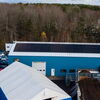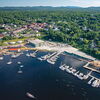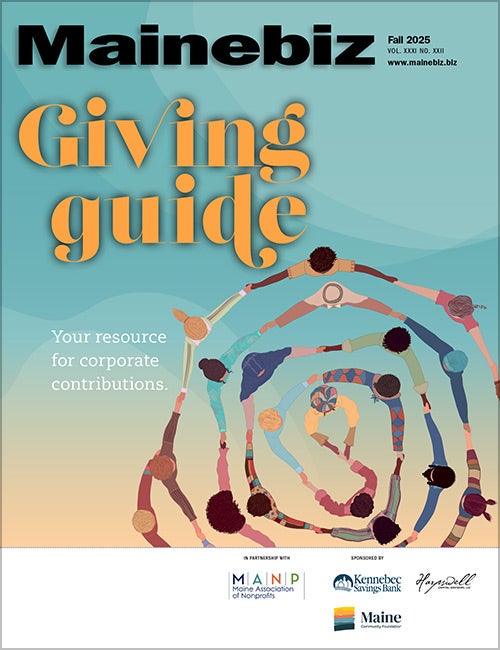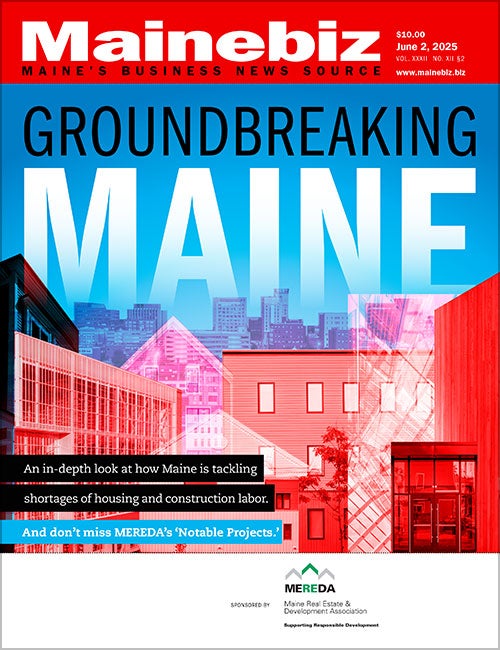Into the wild blue yonder | BNAS redevelopment pursues multiple approaches
The Brunswick Naval Air Station doesn’t officially close until May 2011, but redevelopment efforts are in full swing. With all the squadrons set to leave by December 2009, the Midcoast Regional Redevelopment Authority is gearing up to turn the base’s airport and hangars into an aeronautics hub and to create new jobs there as early as next summer. An environmental feasibility study on the property has already begun, slated to finish in December 2010. But details on other parts of the reuse plan are still unclear as the process moves into murky and, in some cases, uncharted waters.
MRRA is still waiting for a decision on its bid to buy 702 units of base housing, according to Executive Director Steve Levesque. The authority placed a bid, along with seven other entities, for the housing, which is owned by Pennsylvania-based Balfour Beatty Communities. MRRA was one of the few bidders that was then interviewed, Levesque said. If Balfour accepts MRRA’s bid, the authority would borrow the money and could partner with MaineHousing to seek a bond, Levesque said. The situation is unique: The housing is privately owned, but sits atop land owned by the Navy that comes with a nearly 50-year lease. This is the first time in the country that a base closure involves selling privately owned housing, so different entities could end up owning the housing and the land beneath it — and MRRA could end up owning neither. If MRRA does buy the housing, the authority plans to stagger its home sales, demolish some units to reduce the inventory and save some to sell as incentives to companies interested in locating on the base property, Levesque said.
The cost of buying a good chunk of the 3,300 acres of property at the base and the Topsham Annex could fall on MRRA unless Congress passes a bill proposing changes to the transfer process. Some of the land, such as the 1,500-acre airport parcel, will be transferred to MRRA at no cost through what’s known as a public benefit conveyance. But for the rest of the property, including the land underneath the housing, MRRA could have to pay fair market value through an economic development conveyance. This type of conveyance used to be no-cost as well, but the Department of Defense changed that in 2005. A bill proposed by Sen. Olympia Snowe would restore a no-cost economic development conveyance. Otherwise, MRRA will have to raise the money to buy the property; if it can’t, the land would go up for public bid via an eBay-style website, says Levesque, which could stall reuse plans for years. “The Navy gets the money, but the community doesn’t see any redevelopment,” Levesque says. MRRA plans to submit applications for both public benefit and economic development conveyances this fall.
Though housing and land ownership issues may not be resolved for months, MRRA is busy marketing the redeveloped property as a first-class business park with IT capabilities not available anywhere else in the state. The base has been outfitted with an advanced fiber optic network for the Navy’s surveillance operations that runs at speeds 10 to 30 times faster than the standard T1 line, says Levesque. Companies have already approached MRRA looking to relocate there because of that high-speed capability. And with the state’s second largest hotel, the base could become the Midcoast region’s first convention center. Levesque said redevelopment plans include building a new 18-hole golf course to complement the property’s nine-hole course. The authority also plans to market the property as a renewable energy center that could generate and distribute its own power and serve as a research center for the Northeast. MRRA has received a grant from the Maine Technology Institute to perform a feasibility study for an energy center.










Comments